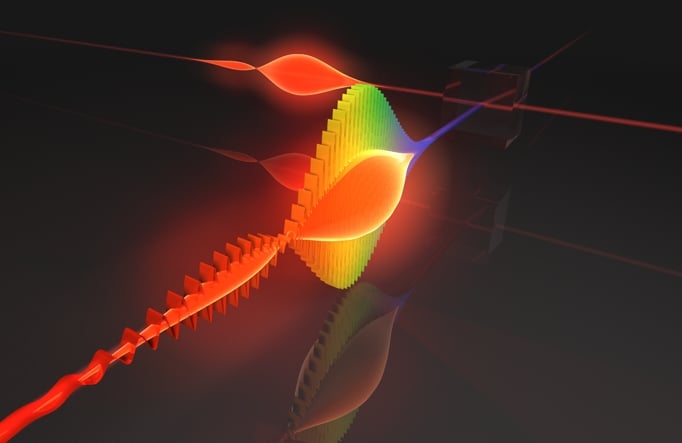Strides Towards Quantum Computing: Photon Wrangling with Nano-Antennae
Good news for those looking forward to quantum computing. A team of physicists from the Hebrew University of Jerusalem in Israel have developed a single photon source that is not only compact, but also operates at ambient temperatures.
Good news for those looking forward to quantum computing. A team of physicists from the Hebrew University of Jerusalem in Israel have developed a single photon source that is not only compact, but also operates at ambient temperatures.
The team working on this single photon source is led by Dr. Ronen Rapaport of the University’s Racah Institute of Physics and consists entirely of applied physicists: Nitzan Livneh, Moshe G. Harats, Daniel Istrati, and Hagai S. Eisenberg.
Photons in Supercomputing
Photons have been identified as the most promising particle for the transmission and processing of data on the quantum level. The hope is that photons can be harnessed to ferry quantum bits of information, qubits, at speeds much faster than current computing methods can achieve.
This is called Linear Optical Quantum Computing (LOQC)— and it’s getting ever-closer to revolutionizing how data is handled.

A visual representation of a photon. Image courtesy of M. Bellini/National Inst. of Optics.
However, working with photons can be difficult. But the Israeli researchers believe they’ve found a sustainable method of placing a single photon source on a chip and directing the emitted photons into a manageable angle of divergence, all at ambient temperatures.
Directing Photons
For one thing, photons are difficult to direct. Some sources emit photons in multiple directions, essentially making them difficult to trap. In the past, researchers have been able to capture these photons by using optical collection systems. However, these systems have been too large to fit on a single chip.
The team at the Hebrew University of Jerusalem appears to have found a way around this particular difficulty by using comparatively simple methodology: They’ve decided to direct the photons by using antennae.
Mind, these particular antennae are nanoscale.

The nano-antenna (left) emits photons in a predictable direction. Image courtesy of ACS Publications.
The antennae have shown that they’re capable of directing photons with an extraordinarily low divergence angle. Basically, the antennae make it possible to wrangle the photons into a predictable path, more predictable than ever achieved before.
A Nanocrystal and Antenna Hybrid
The researchers have paired the use of nanoscale antennae with nanocrystals.
The nanocrystals are known as colloidal nanocrystals and are capable of emitting photons efficiently at room temperature. Some concerns with the use of colloidal nanocrystals have stemmed from the fact that they often include the presence of highly toxic heavy metals like lead and cadmium.
The nanocrystals emit the photons and the antennae focus their path so that they can be collected.
The good news is that these antennae are made from metallic and dielectric layers that can be fabricated with extent industrial techniques.
Harvesting Photons at Ambient Temperatures
Another difficulty of collecting photons is that superconductive materials must be super-cooled to work correctly.
One of the struggles facing large-scale quantum computing research is that cooling superconductors to sufficiently low temperatures requires specialized tools and resources. The use of liquid helium is common, but is expensive.
This particular hurdle is one step closer to being surmounted as the researchers work to direct these single photon particles in an orderly fashion at ambient temperatures. The nanocrystal-antenna approach does not face the same issues and therefore does not require the use of liquid helium as a cooling agent.
Dr. Ronen Rapaport in his lab. Image courtesy of the Rapaport Group.
The long-term goal of this technology, according to Rapaport, would be for several of these nanocrystal/nano antennae devices to be on a single chip, where the photons could then be funneled directly into optical fibers.







